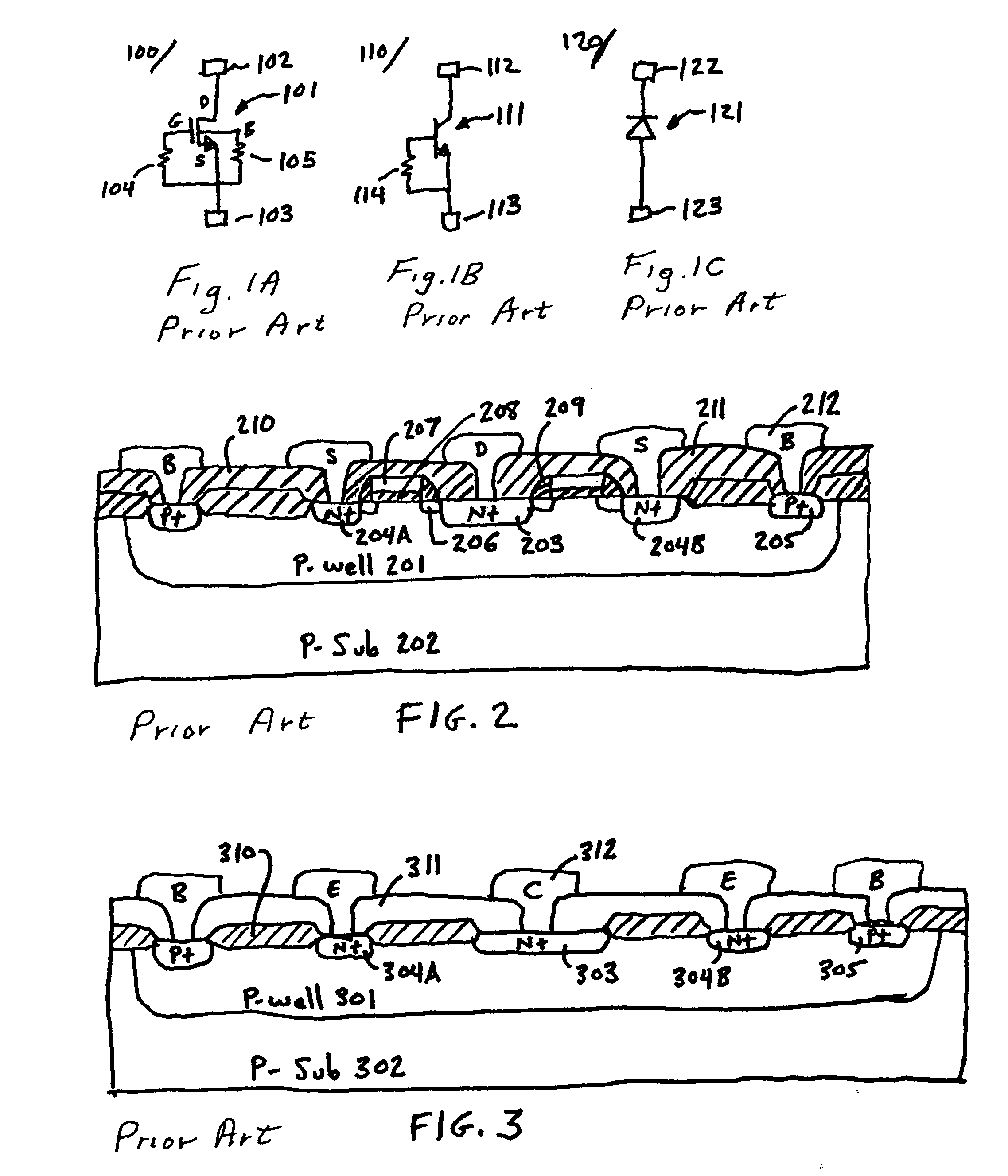ESD protection for bipolar-CMOS-DMOS integrated circuit devices
a technology of integrated circuit devices and cmos, which is applied in the direction of semiconductor devices, semiconductor/solid-state device details, electrical apparatus, etc., can solve the problems of reducing the esd energy distribution efficiency of cmos, so as to achieve the effect of high doping concentration
- Summary
- Abstract
- Description
- Claims
- Application Information
AI Technical Summary
Benefits of technology
Problems solved by technology
Method used
Image
Examples
Embodiment Construction
[0024]An all low-temperature fabrication method using as-implanted junction isolation structures employs high-energy and chain implants with dopant implanted through contoured oxides to achieve fully-isolated bipolar, CMOS and DMOS devices without the need for isolation diffusions, epitaxy or high temperature processes. The low-temperature wafer fabrication methods and isolated device structures were previously described in pending U.S. Application No. 11 / 298,075 and in U.S. Pat. Nos. 6,855,985, 6,900,091 and 6,943,426 to R. K. Williams et al., each of which is incorporated herein by reference.
[0025]The inventive matter in this application is related to these patents and applications but concentrates on the design and integration of isolated and stackable ESD protection structures.
[0026]The low-temperature fabrication of the high-voltage devices described in this application are compatible with the modular low-temperature fabrication methods described in the aforementioned applicati...
PUM
 Login to View More
Login to View More Abstract
Description
Claims
Application Information
 Login to View More
Login to View More - R&D
- Intellectual Property
- Life Sciences
- Materials
- Tech Scout
- Unparalleled Data Quality
- Higher Quality Content
- 60% Fewer Hallucinations
Browse by: Latest US Patents, China's latest patents, Technical Efficacy Thesaurus, Application Domain, Technology Topic, Popular Technical Reports.
© 2025 PatSnap. All rights reserved.Legal|Privacy policy|Modern Slavery Act Transparency Statement|Sitemap|About US| Contact US: help@patsnap.com



